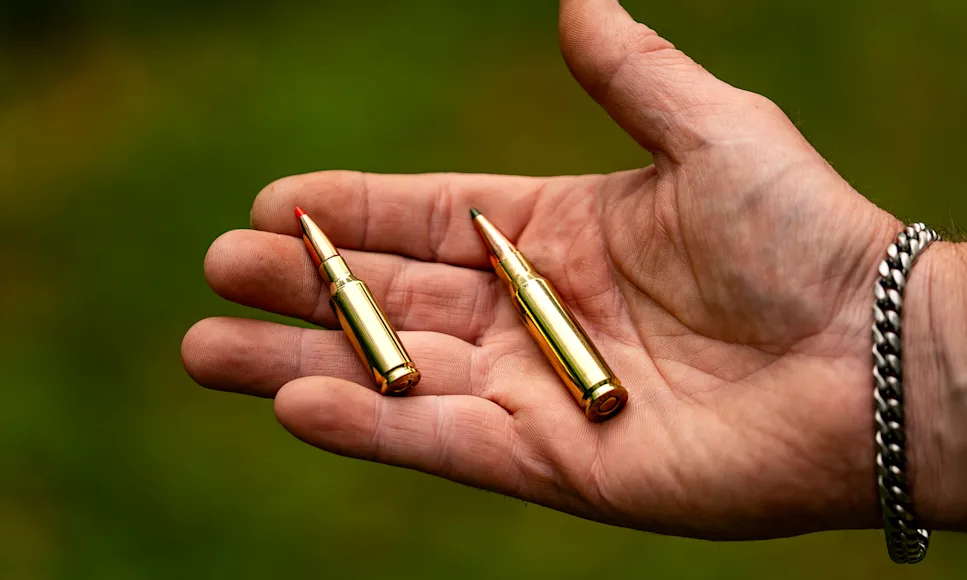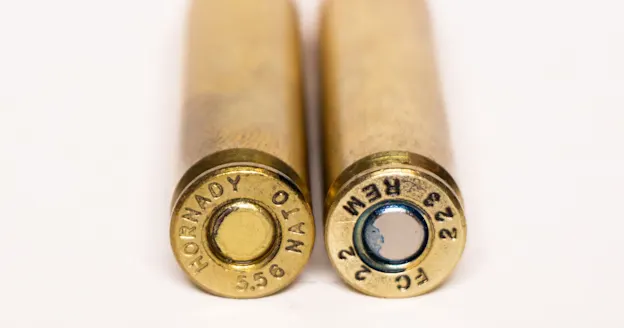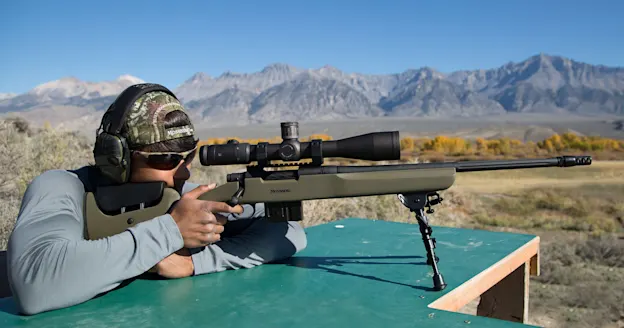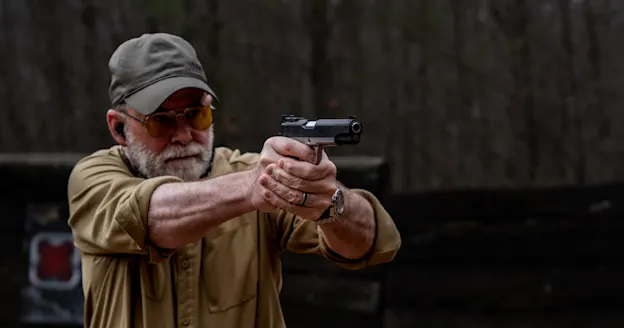We may earn revenue from the products available on this page and participate in affiliate programs. Learn more ›
Why might a hunter be contemplating 6.5 Grendel vs 308 Winchester? After all, the two cartridges are very different, essentially representing two separate power levels. Well, the most obvious reason for the 308 Winchester vs 6.5 Grendel debate is if a hunter cannot decide between a conventional bolt-action rifle or an AR-15. Sure, manufacturers make bolt action and semi-automatic rifles chambered for both cartridges, but from a hunting standpoint, both cartridges also represent a best – or near best – general-purpose option in each platform. Here’s how the 6.5 Grendel and 308 stack up, head-to-head.
6.5 Grendel vs 308 Winchester: Table of Contents
6.5 Grendel vs 308 Winchester: Basic Ballistic Comparison
The 308 Winchester
The 6.5 Grendel
6.5 Grendel vs 308: External and Terminal Ballistics
6.5 Grendel vs 308: Recoil
Rifle Compatibility
6.5 Grendel vs 308: Picking a Winner
Best Loads for the 6.5 Grendel and 308 Winchester
Related: 6.5 Creedmoor vs 6.5 Grendel
6.5 Grendel vs 308 Winchester: Basic Ballistic Comparison
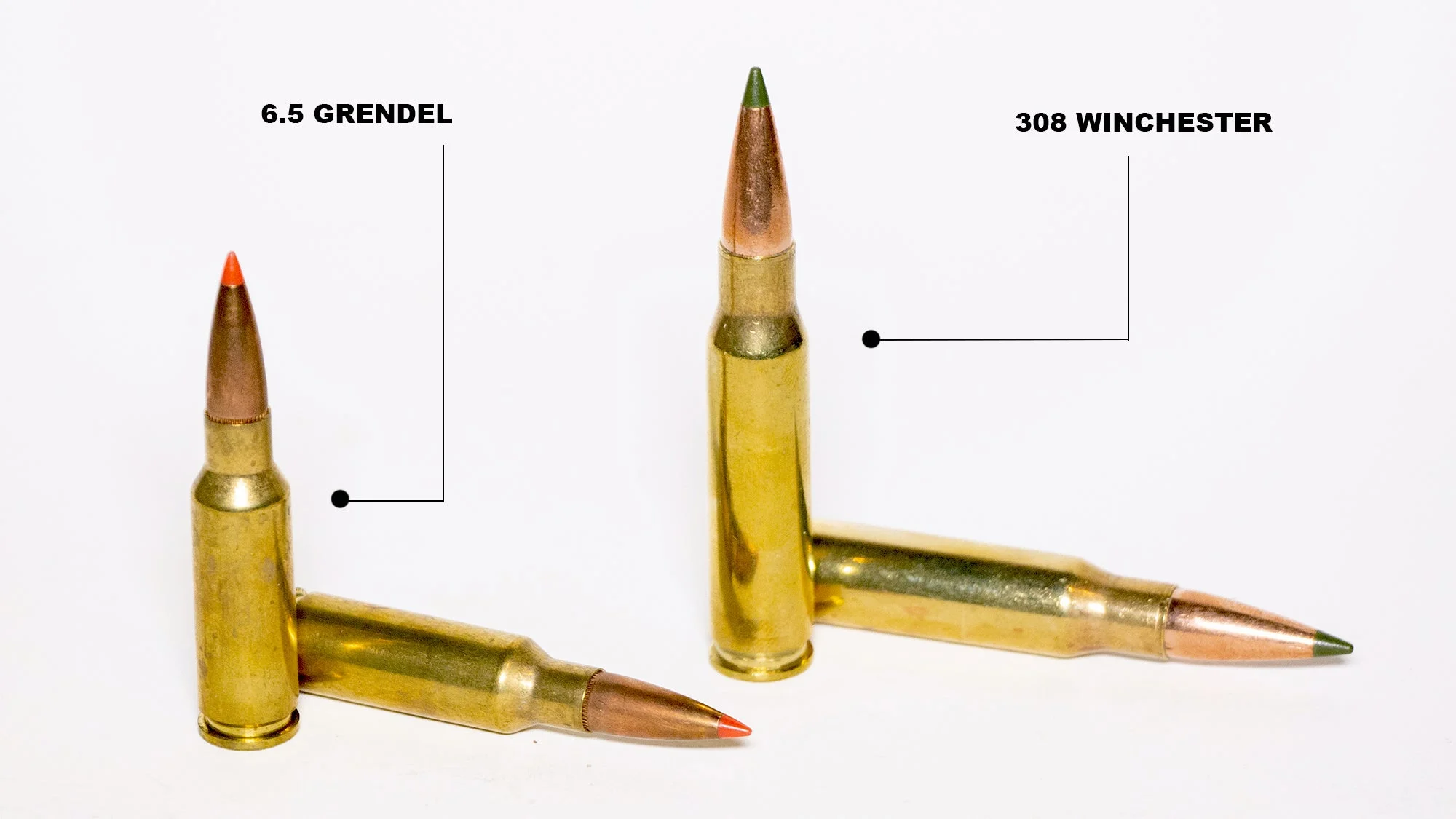
We’ll get into the finer details of how these two cartridges compare from an external and terminal ballistics standpoint, but if you just want a snapshot, here it is. As you can see from the chart below, the cartridges have similar muzzle velocities, but the 308 carries significantly more kinetic energy right from the start. Trajectory, too, is all but identical out to 400 yards. But again, if you’re looking for enough energy to do damage at that distance, the 308 has the clear edge.

The 308 Winchester
Now, let’s step back and look at each cartridge individually. The 308 Winchester has a military heritage, and like all American military cartridges, it is very popular. Winchester introduced it in the 1950s and it has grown in popularity ever since. It will easily match the original ballistics of the 30-06 Springfield cartridge, do it with a shorter case, and do it in rifles with a shorter action. It gained fame with military and police snipers and is unquestionably one of, if not the best, general-purpose rifle cartridges currently available. All of this is why Jeff Cooper selected the 308 Winchester for his concept general-purpose rifle known as the Scout Rifle.
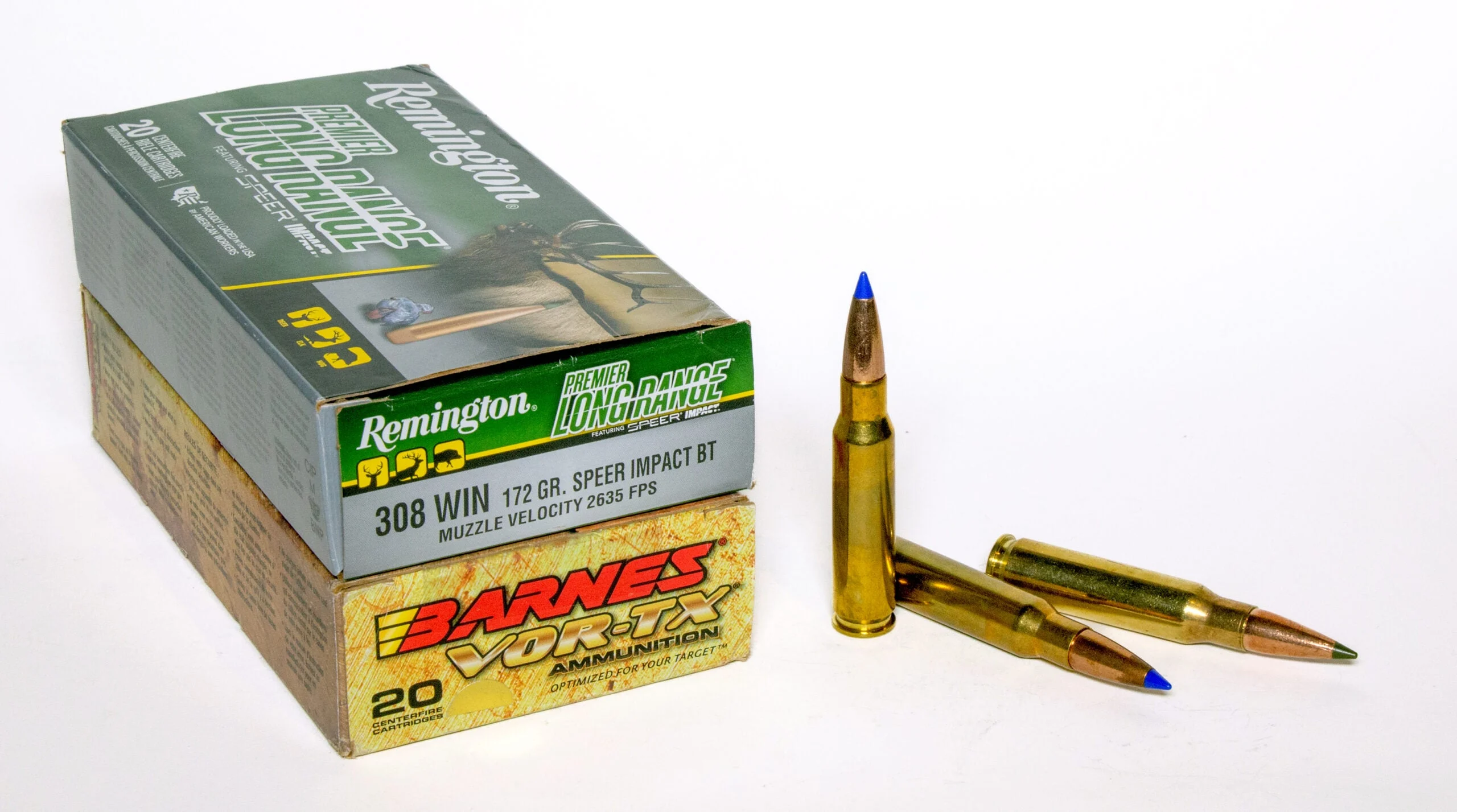
The Sporting Arms and Ammunition Manufactures Institute (SAAMI) originally specified a 1 in 12 twist rate for 308 Winchester rifles, but with the advent of longer and heavier bullets with a higher ballistic coefficient (BC), most modern 308 Winchester rifles have the faster 1 in 10 twist to stabilize these projectiles. It used to be that any time a manufacturer introduced a new rifle, its first chambering was the 30-06. That’s not the case anymore; the 308 Winchester has now eclipsed the 30-06 in – new gun – popularity. Using bullet weights ranging in from 130- to 180-grains, I’ve killed more big-game animals with the 308 Winchester than any other cartridge. It’s as integral to American culture as mustard is to a hot dog.
The 6.5 Grendel
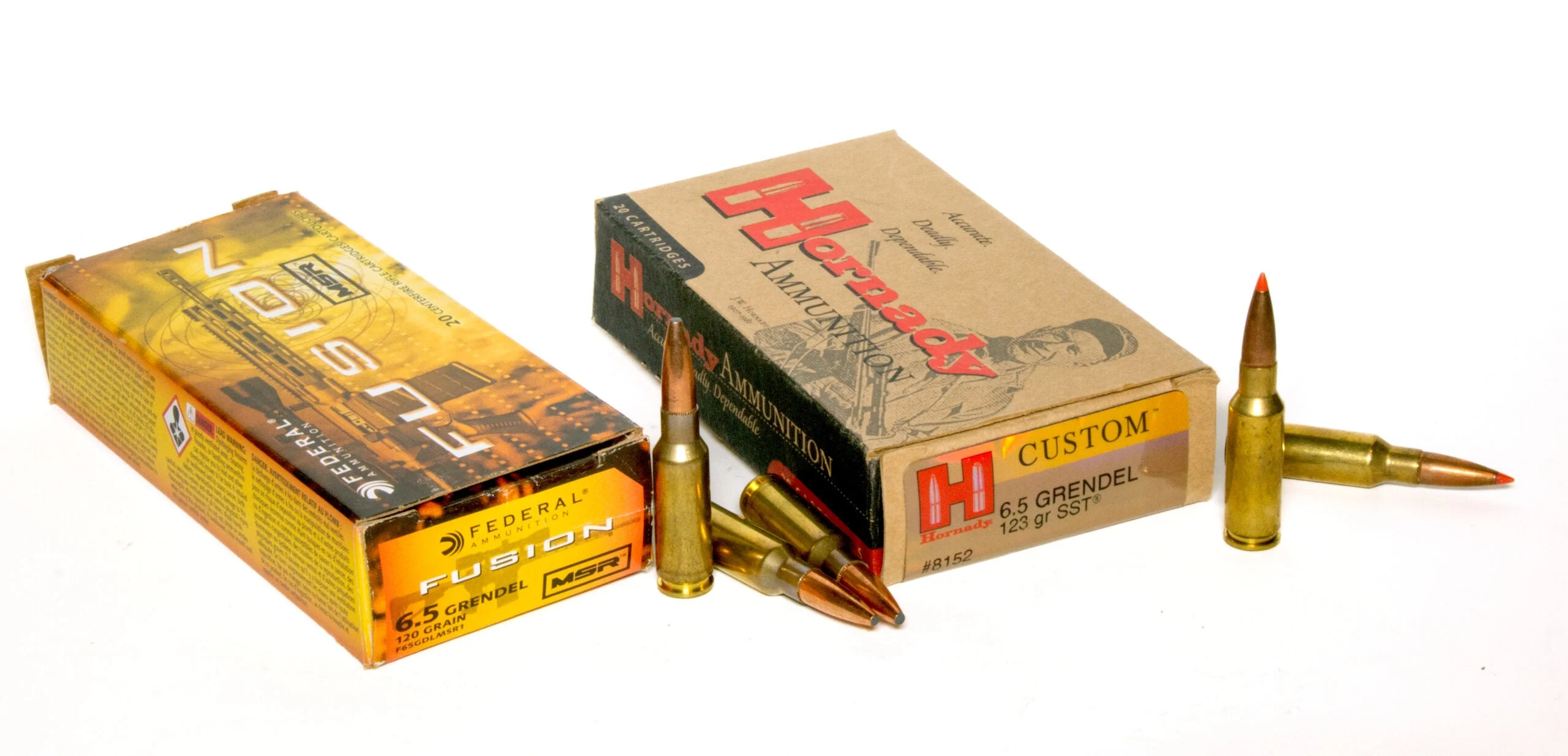
Purpose built to be a low recoiling but ballistically efficient rifle cartridge for the AR-15, Alecander Arms designed the 6.5 Grendel from the 7.62×39/220 Russian cartridge case. The Grendel languished, with mostly a cult-like following from its conception in 2003 until legitimized by SAAMI about seven years later. Since major firearms and ammunition manufactures will not build guns and ammo for non-SAAMI approved cartridges, it wasn’t until about a dozen years ago that the 6.5 Grendel really found its legs and a solid following with hunters and shooters.
Today the 6.5 Grendel is not just a popular cartridge in the AR-15, it has found a home in a variety of bolt-action rifles. In both platforms, it has a lot of appeal because of its combination of a good ballistic performance and low recoil. Though the 6.5 Grendel is slightly ballistically inferior to the 6mm ARC cartridge, it is one of the best big-game cartridges for the AR-15. Many hunters prefer it to the 6mm ARC due to more ammunition options and the heavier bullets that are available. It is also popular for whacking steel at extended range and there are about twenty, quality, factory loads to choose from, with bullet weights ranging from 90 to 123 grains.
6.5 Grendnel vs 308: External and Terminal Ballistics
One of the primary considerations with external ballistics is trajectory. Velocity and energy matter, but together they are more of a terminal ballistics concern. Trajectory determines how much you will have to adjust your sights to get a hit as the distance to the target increases. Surprisingly, with most loads, the 308 Winchester and the 6.5 Grendel are nearly identical out to reasonable hunting ranges of say 400 yards. This surprises many hunters, especially since out of the same weight rifle, the 308 Winchester recoils with more than twice the force. That extra force comes from heavier bullets and more gunpowder. Where you really see the advantages of the 308 Winchester as a hunting cartridge is in terminal ballistics. Let’s take another look at the ballistics chart, again.

With terminal ballistics the story is a different, at least in terms of kinetic energy. At the muzzle, the 308 Winchester will have about a 40 percent advantage in kinetic energy. But as the distance increases, things start to level out. Except for extreme examples, velocities with both cartridges will fall below 2000 fps somewhere between, roughly 375 and 425 yards. This means that depending on the bullet used, bullet upset/expansion starts to become iffy past that distance. Of course, there’s a bit more at play here, too.
The amount of bullet upsets determines wounding and tissue destruction, and that, combined with bullet weight, influences penetration. This is where the 308 Winchester has the clear advantage. Generally, the 308 Winchester will penetrate about 20 to 40 percent deeper than the 6.5 Grendel, and the bullet will upset with a frontal diameter that’s about 10 to 30 percent larger. The 6.5 Grendel will usually push bullets to between 18 and 26 inches of penetration, with bullet upset of about 1.6 times original diameter. Both cartridges, therefore, are more than sufficient for any deer at any sensible distance.
Related: 6.5 Creedmoor vs 243 Winchester
6.5 Grednel vs 308: Recoil
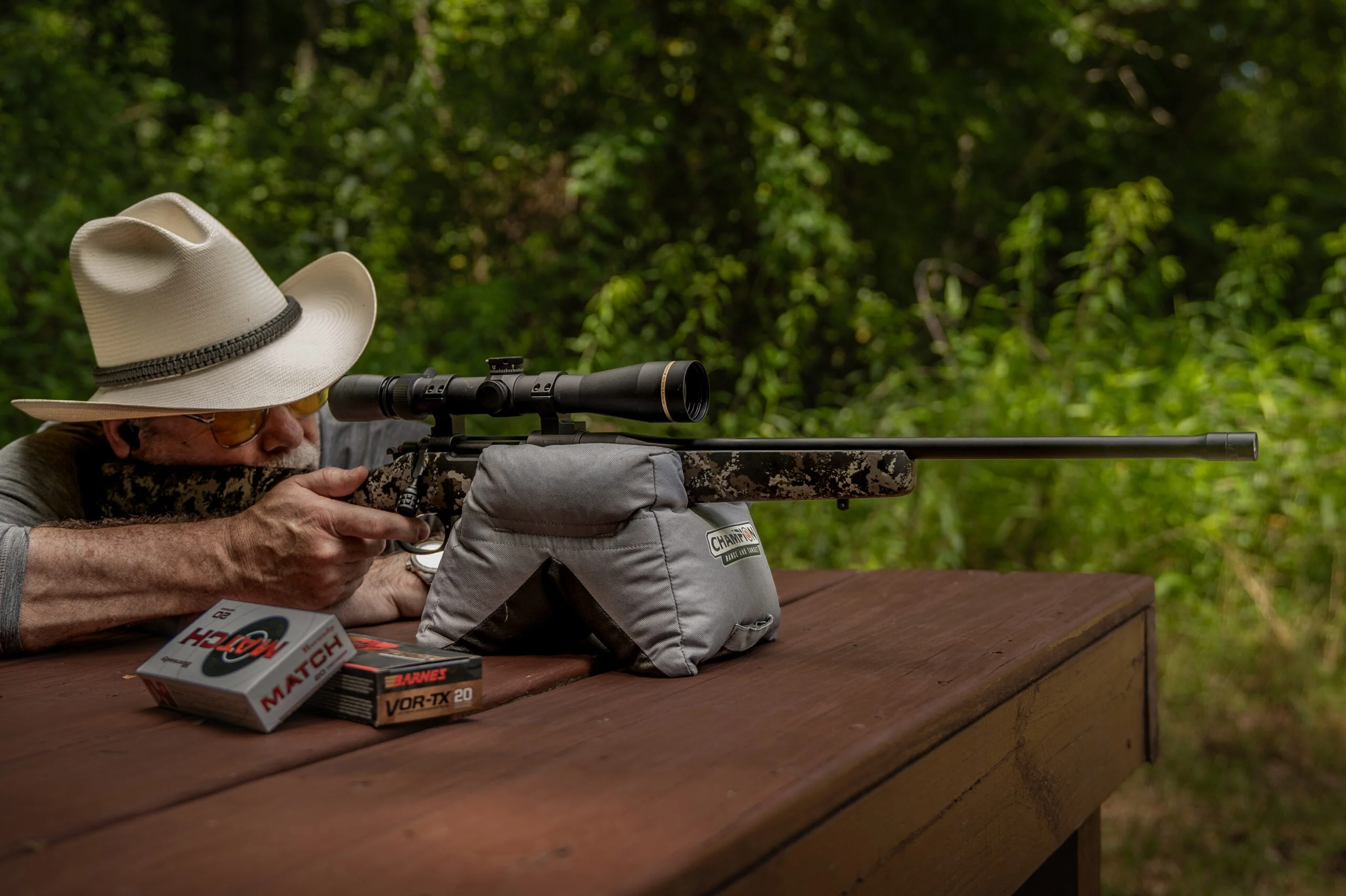
Macho-man hunters act like recoil is a non-existent thing and not are apt to admit that it might negatively impact their shooting. But it almost certainly does. It does not matter how much of a tough guy you might be; harder kicking rifles are more difficult to shoot with consistent precision, period. Now, few will consider the 308 Winchester a hard-kicking rifle, but it’s a non-disputable fact that the 6.5 Grendel recoils with about half the force of the 308. Given that both cartridges have similar trajectories, if you’re only shooting paper and steel—or deer-size game at reasonable ranges—the lighter recoil of the 6.5 Grendel has a lot of appeal.
Rifle Compatibility
Unless you’re intending to hunt larger species of big game like elk and moose, rifle compatibility might be the most important consideration between these two cartridges. If you’re looking at bolt-action rifles, a conventional 308 rifle can weigh a half pound more than some bolt-action rifles like the Wilson Combat NULA Model 20S built on a mini action for the 6.5 Grendel.
This is even more exaggerated with semi-automatic AR-styled rifles. For example, the Stag Arms Stag 15 Pursuit in 6.5 Grendel weighs a full 10 ounces less than the company’s Stag 10 Pursuit in 308 Winchester. With other AR-10 and AR-15 comparisons the weight differential can be even more. The bottom line is that you can find a lightweight rifle chamber for either cartridge, but the Grendel is apt to be lighter.
6.5 Grendel vs 308: Picking a Winner
As mentioned, these cartridges occupy different power levels. The 308 Winchester will produce muzzle energies between 2000 and 3000 foot-pounds, and the 6.5 Grendel is a sub-2000 foot-pound cartridge. This means from a ballistics standpoint a 308 Winchester can handle larger game better. Since the trajectories of both cartridges are similar, for the recreational shooter, the 6.5 Grendel has a tremendous advantage due to its much lighter recoil and compatibility with lighter-weight rifles. Ammunition for the 6.5 Grendel also costs a bit less. In the end, the 6.5 Grendel vs 308 Winchester boils down to this: A deer hunter cannot go wrong with either, an elk hunter should probably opt for the 308, and for fun in the sun, go with the Grendel.
Best Loads for the 6.5 Grendel and 308 Winchester
There are nearly 200 factory 308 Winchester loads to choose from, and they come loaded with bullets suitable for everything from vermin to deer, elk, moose, and even steel at long range. This means selecting a best load for the 308 Winchester is complicated and really depends on what you want to shoot with the rifle. There are only about 20 6.5 Grendel loads to choose from, with bullet weights ranging from only about 90 to 123 grains. For our comparison sake, here, we’re going to look at one of the best loads for deer with each cartridge.
With the 308 Winchester you don’t need a heavy bullet for a deer; 150-grains is just about ideal, and it’s really hard to go wrong no matter which load you select. If you want to take just about any shot you’re presented with and know the bullet will penetrate deep enough to get the job done, Nosler’s 150-grain AccuBond load at about 2875 fps will work wonderfully well.
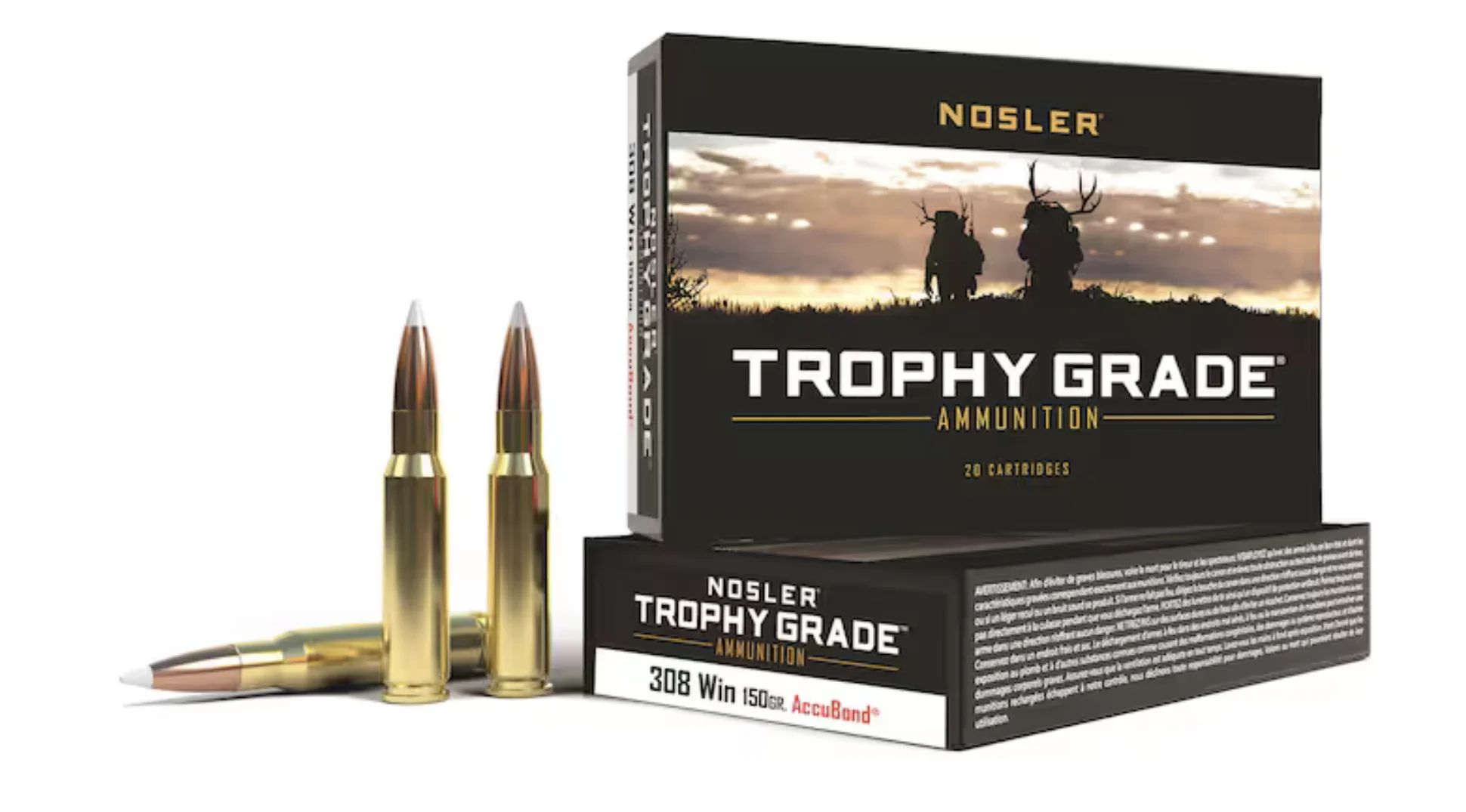
When it comes to a best deer load for the 6.5 Grendel, the Controlled Chaos bullet by Lehigh Defense has a lot to offer. This bullet erupts on impact and shrapnel-like pieces of the bullet radiate outward from the wound track to help with tissue damage. But what makes this bullet a good choice for the 6.5 Grendel is that the bullet shank will continue to penetrate very deeply, maybe even deeper than some common deer loads for the 308 Winchester.

